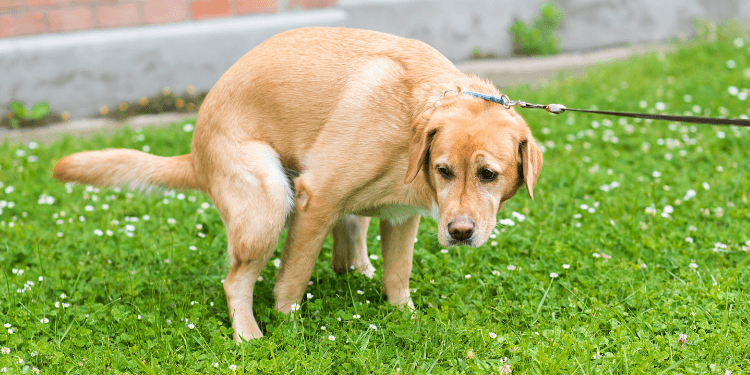Ah, the pooping question. ???? At TopDog Health, this is one of the most common questions we hear from pet owners following their pup’s orthopedic surgery. And since a dog’s bowel movement patterns tend to be a little unusual after surgery, it’s not surprising that pet parents are wondering.
So we’ve rounded up everything you need to know about what’s normal, what’s abnormal, why your dog may be constipated after orthopedic surgery, and what you can do to help.
Q: When Should My Dog Have Their First Bowel Movement After Surgery?
A: Many dogs will not have a bowel movement for the first 3-4 days after anesthesia and surgery. This is normal as long as there is no straining to attempt defecation.
Reasons for constipation after surgery may include:
- Your dog has been fasted prior to surgery
- Your dog has not been eating well during their hospital stay or the first few days at home
- Your dog has not been drinking enough post-surgery (hydration is key to avoiding constipation)
- Anesthesia can temporarily slow down the intestinal tract
- Certain pain medications can cause constipation (some examples include Previcox, Rimadyl, Novox, and Carprofen)
- Restricted mobility can cause constipation (a dog’s urge to have a bowel movement is closely linked to exercise)
Q: How Can I Help My Dog Have a Bowel Movement After Surgery?
A: If your dog has not had a bowel movement by the 5th day following surgery, there are several at-home remedies you can try to help soften the stool and allow them to pass it:
- Canned pumpkin – Canned pumpkin is one of the most recommended treatments for canine constipation, due to its high fiber content. Not only do dogs think it’s delicious, but it’s also inexpensive and readily available at your local grocery store. Try mixing anywhere between 1 and 3 TBSP twice a day.
- In general 1 TBSP per 50 pounds of your dog’s body weight
- Miralax – Miralax, is a tasteless laxative that can be purchased at your local pharmacy and given to your pup to help with constipation. Miralax works by helping to bring water back into the intestinal tract to get things moving. A good general rule is to mix it into your dog’s food twice daily. Be sure your dog drinks plenty of water after giving them Miralax. As always, it’s best to connect with your vet before starting any over-the-counter medication. But, the general dosing can be found below.
- Small dogs = 1/8 t0 1/4 teaspoon every 12 hrs
- Medium dogs = 1/4 to 1/2 teaspoon every 12 hrs
- Large dogs = 1/2 to 3/4 teaspoon every 12 hrs
- Fluid intake – Post-surgery pups can be too tired or uncomfortable to drink their usual amount of water, and dehydration can lead to constipation. If your dog is reluctant to drink enough water, try mixing some low-sodium beef or chicken broth into their water to make it more appealing, or mix some water in with their meals.
Q: When Should I Call My Veterinarian?
A: It’s time to contact your veterinarian if:
- Your dog has not had a bowel movement 7 days after surgery
- Your dog has not had a bowel movement after 2 days of conservative home treatment for constipation (canned pumpkin, Miralax, upped fluid intake, etc.)
- Your dog is noticeably straining to attempt defecation
- You notice any blood in the stool your dog does manage to pass
And as always, if you’re worried about your beloved pet or something doesn’t feel right to you, listen to your gut and call your veterinarian. They know your dog’s specific condition and medical history and can help you through any concerns you have. When you’re an advocate for your pet’s health, they have the best chance at a full and speedy recovery.











